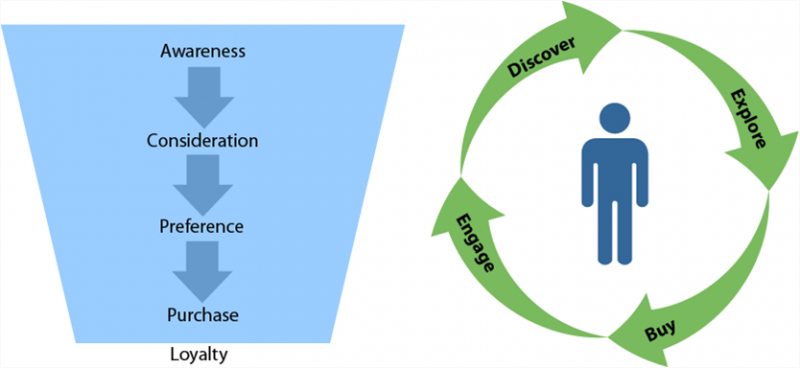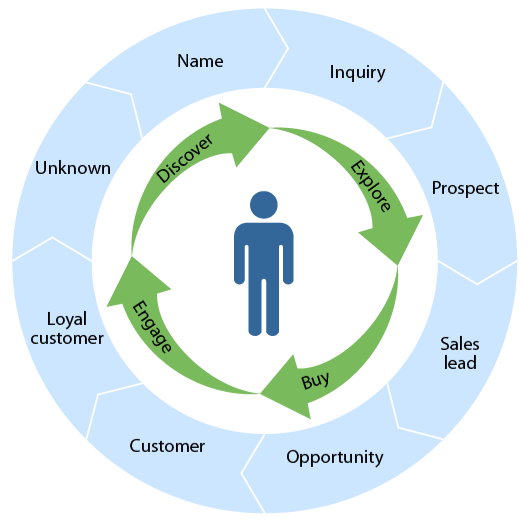What If We Merged The Marketing And Sales Funnel With The Customer Life Cycle?
Carlos Hidalgo from The Annuitas Group reminded me in his blog post yesterday that at last year's DemandCon, I decided to be a little provocative in my keynote by claiming that "the marketing funnel is dead." I couldn't resist, especially given that the conference logo is a funnel. I didn't get the oohs and aahhs I expected, and no one threw tomatoes.
I went on to explain that the funnel still serves a purpose, but it no longer reflects today's buyer journey, as my colleague Steven Noble articulated in his report "It's Time To Bury The Marketing Funnel." In a nutshell, buyer behavior is less funnel-like than ever before: Buyers don't move in a linear fashion, they don't necessarily narrow their consideration set as they move through their problem-solving process, and, if you deliver a great experience, they buy from you again.
What does a buyer's problem-solving process look like?  It's a customer life cycle (see the picture on the right), where business-to-business (B2B) buyers 1) discover they have a problem or an opportunity and get to a point where they realize they need to change the status quo; 2) explore their requirements and the options for solving the problem; 3) select the best solution and acquire it; 4) and engage with the solution provider and with their peers as they implement the solution . . . and so on and so on.
It's a customer life cycle (see the picture on the right), where business-to-business (B2B) buyers 1) discover they have a problem or an opportunity and get to a point where they realize they need to change the status quo; 2) explore their requirements and the options for solving the problem; 3) select the best solution and acquire it; 4) and engage with the solution provider and with their peers as they implement the solution . . . and so on and so on.
So what about the funnel model that Elias St. Elmo Lewis created more than 100 years ago? For B2B marketing and sales teams, it still plays a valuable role. As Carlos points out, "There is still an internal operational component to managing leads and sales that cannot become overly burdensome or complex."
Here's how, at the highest level, I distinguish between the primary use of each of these important models:
- Use the customer life cycle to (among other things): understand the journeys of each stakeholder in your customer buying process, the questions they ask, and the information they need to confidently move through those journeys; map content and insights your firm can deliver to those journeys; and define the ideal experience your firm needs to deliver at each touchpoint to exceed customer expectations and drive customer loyalty.
- Use the marketing and sales funnel to (among other things): understand (or define) your internal lead-to-revenue process, the volume and value of potential buyers at each stage of that process, the conversion rates between stages, and the operational changes your marketing and sales pros need to make to tune this revenue engine and eliminate choke points.
Then a few months ago when I was working on a report on metrics that show marketing's impact on revenue, my editor asked me why the two models couldn't be merged. Why can't you show the traditional funnel as a cycle, around the customer, where the operational stages used by marketing and sales to manage the funnel are aligned with the phases of the customer life cycle? So I published this:

Since I started writing this, I see that Carlos' tweet defending the funnel has sparked a good twitter conversation and recognition that this is a great topic to discuss.
What do you think? Is the funnel metaphor too ingrained in the minds and habits of B2B marketing and sales folks? Or can a cyclical representation of the funnel stages capture the operational aspects that marketing and sales teams need while keeping them honest and centered on the customers' fickle journeys?